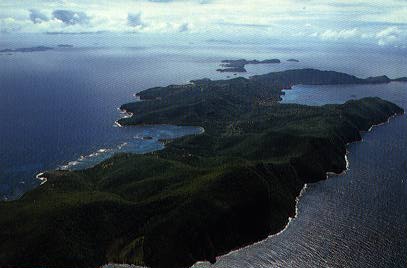
A Study of Bequia
The submarine basement of Bequia, is a hornblende andesite, and has been
dated with a K/Ar age of 6.25 Ma. While lavas found on land have been dated
at 3.6 to 5 Ma. The island has three main formations, that include basaltic
lavas, tuffs, hyaloclastites and vertical dykes. The central portion of
the island is composed of andesite and basaltic andesite breccias. The
basalts found on Bequia can be divided into three main types. The oldest
are highly porphyritic with large clinopyroxene and olivine phenocrysts.
Next there are high alkali basalts. Lastly there are quartz-normative lavas.
The last two are most likely related through fractional crystallization
as they show a gradual change in chemistry. However, the most primitive
does not seem related.
